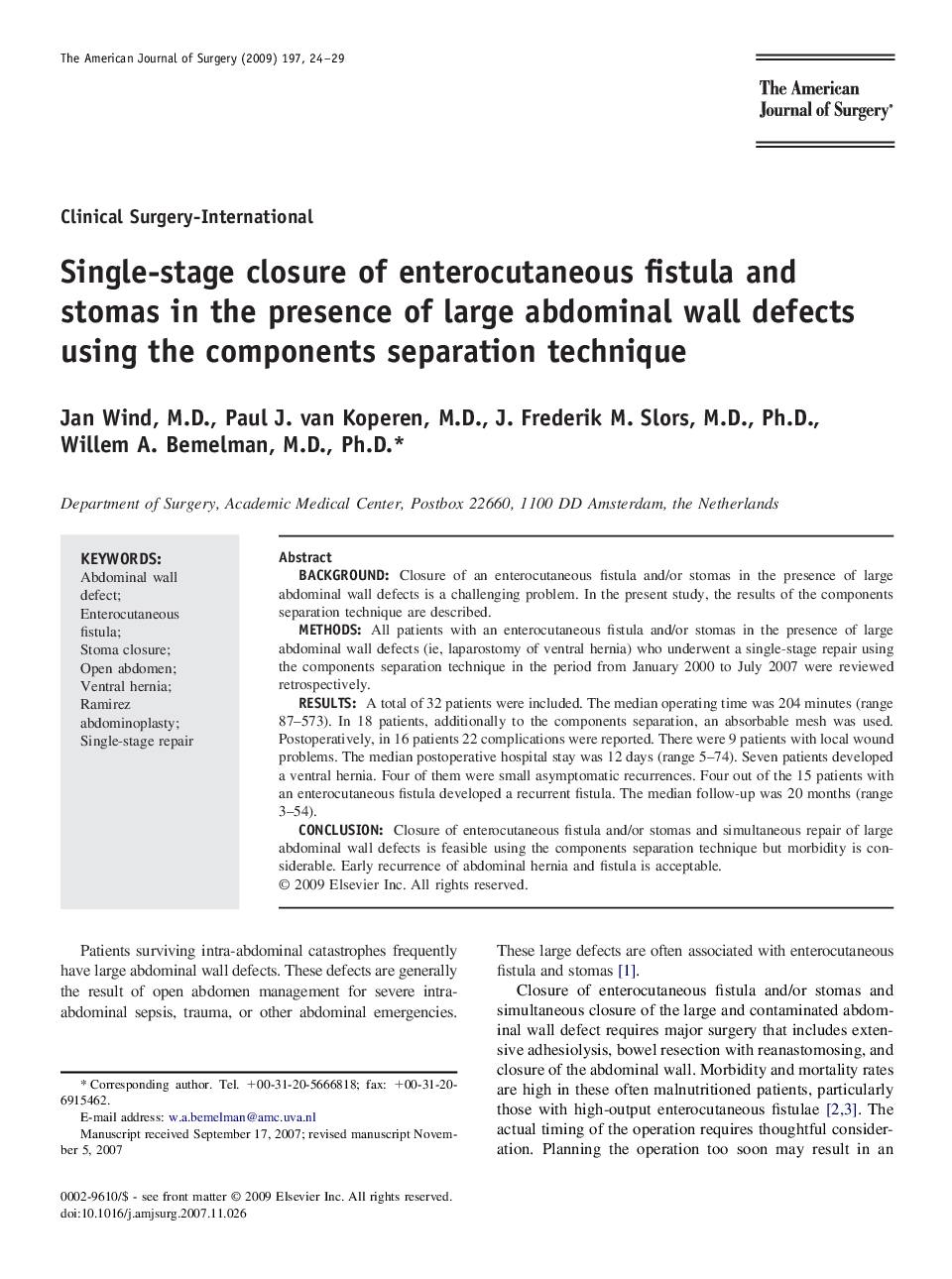| Article ID | Journal | Published Year | Pages | File Type |
|---|---|---|---|---|
| 4280561 | The American Journal of Surgery | 2009 | 6 Pages |
BackgroundClosure of an enterocutaneous fistula and/or stomas in the presence of large abdominal wall defects is a challenging problem. In the present study, the results of the components separation technique are described.MethodsAll patients with an enterocutaneous fistula and/or stomas in the presence of large abdominal wall defects (ie, laparostomy of ventral hernia) who underwent a single-stage repair using the components separation technique in the period from January 2000 to July 2007 were reviewed retrospectively.ResultsA total of 32 patients were included. The median operating time was 204 minutes (range 87–573). In 18 patients, additionally to the components separation, an absorbable mesh was used. Postoperatively, in 16 patients 22 complications were reported. There were 9 patients with local wound problems. The median postoperative hospital stay was 12 days (range 5–74). Seven patients developed a ventral hernia. Four of them were small asymptomatic recurrences. Four out of the 15 patients with an enterocutaneous fistula developed a recurrent fistula. The median follow-up was 20 months (range 3–54).ConclusionClosure of enterocutaneous fistula and/or stomas and simultaneous repair of large abdominal wall defects is feasible using the components separation technique but morbidity is considerable. Early recurrence of abdominal hernia and fistula is acceptable.
